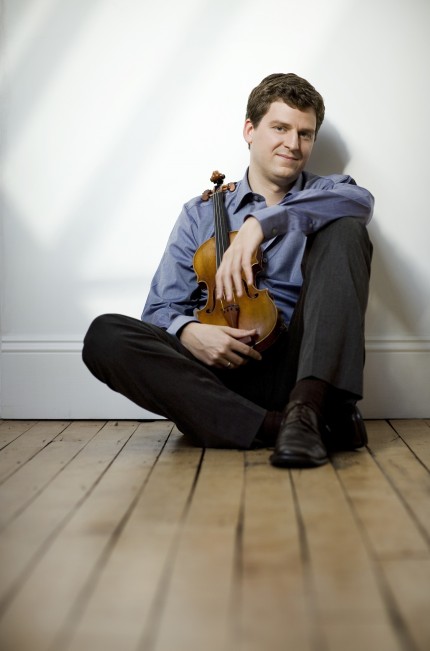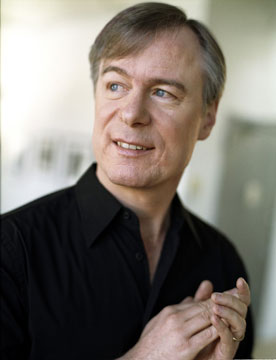Ehnes, St. Louis Symphony present U.S. debut of Manoury concerto

Violinist James Ehnes, David Robertson and the St. Louis Symphony presented the U.S. premiere of Philippe Manoury's "Synapse" Sunday night at the Krannert Center in Urbana.
Chicago music lovers can be forgiven for imagining that they have the Midwest monopoly on world-class orchestral playing. Yet there are a few others in the region who have also reached the top rank, and the ensemble to our southwest has current bragging rights for arguably the most esteemed American conductor of our time.
David Robertson brought his St. Louis Symphony to the Krannert Center for the Performing Arts in Urbana, Illinois, Sunday night in a program that boasted a bracing mix of romanticism and modernism. In his seventh season at the helm, all of the orchestra’s traditional attributes were fully intact — albeit amplified — with a dose of super-charged adrenalin that has become one of Robertson’s calling cards.
The music of Philippe Manoury is a heady dose of uncompromising modernism in an era that considers such virtues passé. His violin concerto Synapse was heard in its American premiere last weekend (also presented in St. Louis Friday and Saturday) by soloist James Ehnes, a superb musician more known for suave and polished interpretations of standard repertoire than for ventures in contemporary music.
Perhaps anticipating audience indifference to such an overwhelming overflow of sonic data, Robertson provided a well-rehearsed and illuminating introduction, complete with deftly played snippets by the soloist. The conductor described Manoury’s scheme as a single neuron generating impulses that move and multiply throughout the nervous system. The source neuron was represented by a single pitch, clearly audible and often sustained at various points in a work otherwise dominated by dense webs of sound.

David Robertson
While the 30-minute piece didn’t go down easily for most in the audience, there was much to admire in the ambitious undertaking. For all of the work’s daunting complexities, the composer tacitly acknowledged the time-honored necessity of soloist as focal point. Ehnes easily vanquished the formidable challenges, finding ways to project dramatic struggle in the near-absence of lyrical content. And even with the maze of tangled threads woven into the orchestral fabric, the listener is thrown a life raft in the form of the single pitch “neurons,” functioning much like Baroque pedal points or ostinatos.
Finally, the composer re-affirmed the centuries-old French fascination with color, liberally applying splashes of technicolor brilliance that kept the ear fully engaged, if a bit weary, by the concerto’s conclusion.
Manoury’s work was tailor-made for Robertson’s strengths, but Sibelius’ First Symphony didn’t seem like a good match for the maestro’s laser-edged focus and unyielding impulse for forward momentum. Indeed, his reluctance to linger over the occasional moment was disconcerting in the second movement, which nevertheless projected resolute grandeur and sweeping lyricism. In most respects this was a revealing and ultimately satisfying reading, with seldom-heard inner voices snapping into focus and formal architecture etched in high relief.
Robertson’s love for high resolution also paid dividends in a hard-driven, high-octane account of Wagner’s Overture to The Flying Dutchman. The brass section was especially notable for its visceral and tightly balanced punch.